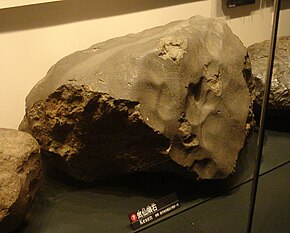
Rikuzentakata is a city located in Iwate Prefecture, Japan. In the census of 2010, the city had a population of 23,302, and a population density of 100 persons per km2. The 2011 Tōhoku earthquake and tsunami caused extensive damage to the city. As of 31 March 2020, the city had an estimated population of 19,062, and a population density of 82 persons per km2 in 7,593 households. The total area of the city is 231.94 square kilometres (89.55 sq mi).

Campo del Cielo refers to a group of iron meteorites and the area in Argentina where they were found. The site straddles the provinces of Chaco and Santiago del Estero, located 1,000 kilometers (620 mi) north-northwest of Buenos Aires, Argentina and approximately 500 kilometres (310 mi) southwest of Asunción, Paraguay. The crater field covers 18.5 by 3 kilometres and contains at least 26 craters, the largest being 115 by 91 metres.

The Canyon Diablo meteorite refers to the many fragments of the asteroid that created Meteor Crater, Arizona, United States. Meteorites have been found around the crater rim, and are named for nearby Canyon Diablo, which lies about three to four miles west of the crater.

The pallasites are a class of stony–iron meteorite. They are relatively rare, and can be distinguished by the presence of large olivine crystal inclusions in the ferro-nickel matrix.

The Paragould Meteorite at 41 inches (1,000 mm) by 24 inches (610 mm) by 16 inches (410 mm) and weighing 370 kilograms (820 lb) is the second largest witnessed meteorite fall ever recovered in North America and the largest stony meteorite chondrite. It fell to Earth at approximately 4:08 a.m. on February 17, 1930.
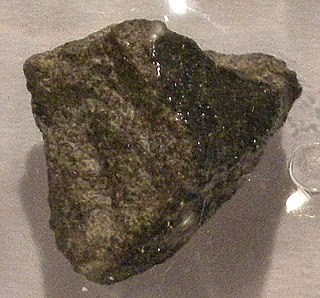
Stannern meteorite fell on May 22, 1808 into the Moravian village Stonařov, in today's Czech Republic.

The Sylacauga meteorite fell on November 30, 1954, at 12:46 local time in Oak Grove, Alabama, near Sylacauga, in the United States. It is also commonly called the Hodges meteorite because a fragment of it struck Ann Elizabeth Fowler Hodges (1920–1972).

Brenham is a pallasite meteorite found near Haviland, a small town in Kiowa County, Kansas, United States. Pallasites are a type of stony–iron meteorite that when cut and polished show yellowish olivine (peridot) crystals.

Krasnojarsk was the first pallasite meteorite ever found.

Huckitta is a pallasite meteorite recovered in 1937 from Huckitta Cattle Station in the Northern Territory of Australia.

Pultusk is an H5 ordinary chondrite meteorite which fell on 30 January 1868 in Poland near the town of Pułtusk. The event has been known as the stony meteorite shower with the largest number of pieces yet recorded in history. Made up of rocky debris, it consists of pyroxene or olivine chondrules deployed in massive plagioclase. Kamacite is also reported.

Park Forest is an L5 chondrite meteorite that fell on 26 March 2003 in Illinois, United States.

The Yardymly meteorite is an iron meteorite that fell in Yardymli Rayon, Azerbaijan on November 24, 1959. The remains were discovered in the nearby village of Aroos. With five individual specimens, the total weight of the meteorite is estimated at 150.29 kilograms (331.3 lb). The meteorite is kept in the Institute of Geology of Azerbaijan National Academy of Sciences. According to the director of Şamaxı Astrophysical Observatory Eyub Guliyev, the Yardymli meteorite may originate from the shower of Perseids.

Elbogen, also the Loket Iron, is an iron meteorite that fell in the village of Loket, Karlovy Vary Region, Kingdom of Bohemia, about the year 1400. Also known during the Middle Ages as the "bewitched burgrave" of Elbogen, due to a cursed Count at the Elbogen castle, it is the oldest of 15 recorded falls in the Czech Republic. It has not survived to our time in its original size, having been cut for scientific purposes and its pieces sent to museums all around the world.
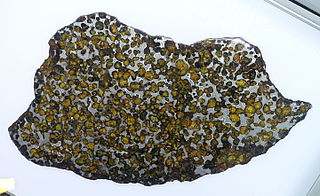
The Springwater meteorite is a stony-iron pallasite, found near Springwater, Saskatchewan in 1931. At that time the find consisted of three large masses (38.6 kilograms, 18.6 kilograms and 10.6 kilograms. Other fragments have been found recently, including a 53 kilograms individual in 2009 that is now in the Royal Ontario Museum.

Nakhlites are a group of Martian meteorites, named after the first one, Nakhla meteorite.
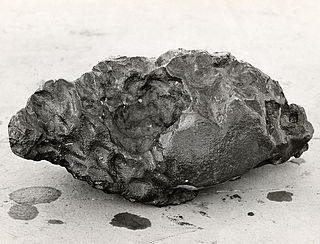
The Loreto is a meteorite that was found in Baja California Sur, Mexico. It was found in 1896 and weighed approximately 95 kilograms (209 lb).

The Příbram meteorite fell on 7 April 1959 east of Příbram, former Czechoslovakia. Four pieces were found, the largest having a mass of 4.425 kilograms (9.76 lb).
The Twannberg meteorite is a hexahedrite iron meteorite. It is the only meteorite of the IIG group found in Europe and the largest meteorite ever found in Switzerland.
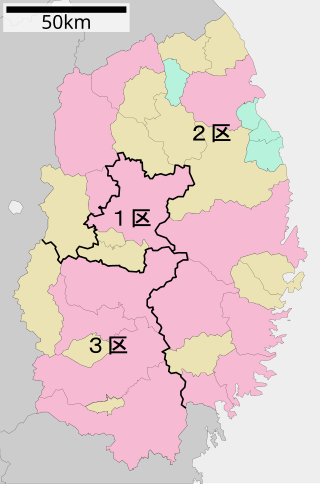
Iwate 2nd district is a single-member constituency of the House of Representatives in the National Diet of Japan located in Iwate Prefecture. As of 2020, the district was home to 376,270 constituents.
